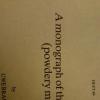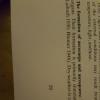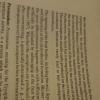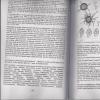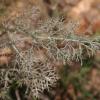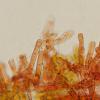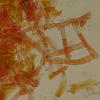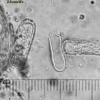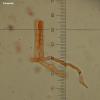
24-12-2025 17:08
Hulda Caroline HolteHello, I have found this propoloid ascomycete on

21-12-2025 09:32
Hello.A tiny ascomycete found embedded in wood in

21-12-2025 21:32
Pol DebaenstHello, Garden, Burgweg 19, Veurne, BelgiumOn 10/1

22-12-2025 23:38
Patrice TANCHAUDBonsoir, récolte sur un mur en pierre, apothéci

22-12-2025 00:47
Patrice TANCHAUDBonsoir, récolte à proximité du milieu dunaire
 Today I found two specimens of Foeniculum vulgare (fennel) covered with a blanket of sparse white mycelium. Under the microscope I observed a white-semi-hyaline profusely branched mycelium over the epidermis of the host's leaves (=cladodes) but imprgenanting down into the host tissues at regular intervals. The mycelium produced upright perpendicular, simple, 2-3 (4) segmented, 70-100um long branches (conidiophores) were the last cell, fragments away and becomes free as a conidia. The conidia are 30-40um x 10-17um wide, rectangular with truncate sides, finely dotted, an a thick wall, somewhat more thick at one pole forming an eccentric hyphal content. The surface seams to be rought at the perimiter. No Cleistothecium was observed, perhaps the mycelium is young.
Today I found two specimens of Foeniculum vulgare (fennel) covered with a blanket of sparse white mycelium. Under the microscope I observed a white-semi-hyaline profusely branched mycelium over the epidermis of the host's leaves (=cladodes) but imprgenanting down into the host tissues at regular intervals. The mycelium produced upright perpendicular, simple, 2-3 (4) segmented, 70-100um long branches (conidiophores) were the last cell, fragments away and becomes free as a conidia. The conidia are 30-40um x 10-17um wide, rectangular with truncate sides, finely dotted, an a thick wall, somewhat more thick at one pole forming an eccentric hyphal content. The surface seams to be rought at the perimiter. No Cleistothecium was observed, perhaps the mycelium is young.I think it is an Erysiphe spp. but can you confirm or suggest alternative IDs please (Microsphaera spp. ??)


Just one more note - This mildew was found in the wild on two Foenicul vulgare (common fennel), about 100m apart... = it seems to be specific to fennel. Any bells ringing?

I checked some powdery mildew monographs (Amano, 1986. Host range and geographical distribution of the powdery mildew fungi; Braun, 1987. A monograph of the Erysiphales; Braun & Cook, 2011. Taxonomic Manual of the Erysiphales) and found no reports of powdery mildew on such host. I also checked the USDA - SMML repository (http://nt.ars-grin.gov/fungaldatabases/index.cfm) and the search returned zero powdery mildew for the genus Asparagus, too.
If you are sure about the host identity, please get in touch with Uwe Braun (uwe.braun@botanik.uni-halle.de), I'm sure he will be glad to help you.

Are any Erisyphe spp. recorded on Ferula/Foeniculum? According to the database link you kindly provided, there is no linke between Erisyphe spp. and Apiaceae but I do not have the monographs you mentioned. Interesting!

http://www.mycobank.org/BioloMICS.aspx?TableKey=14682616000000067&Rec=284030&Fields=All
Erysiphe umbelliferarum f. ferulae Golovin: 143 (1961)
which is a synonym of
Erysiphe heraclei DC., Flore française 6: 107 (1815)

Well, on Ferula spp. (but not on F. communis) there is the report of the ubiquitous Erysiphe heraclei, from Romania, India and Kazakhstan (reported as the former USSR).
PS.: Sorry for the image, it was the best I could get.

Thanks once again.
I see if I can download the monograph from somewhere, since it is very detailed.

Erysiphe cichoracearum Spain - 7190,
Erysiphe heraclei Argentina - 35984,Brazil - 47949,Bulgaria - 13300, 37557,California - 48112,Colombia - 40553,Egypt - 7190,France - 7190, 13300,India - 7190,Italy - 7190, 13300,Korea - 47939,Pakistan - 7190,Poland - 7190, 13300, 44009,Spain - 7190, 13300,Ukraine - 13300,USSR - 7190,
Erysiphe lichenoides Portugal - 8480,
Erysiphe taurica Spain - 8480,
I guess this new info makes the finding less important on an international level, but likely a new species for Malta (= I need to check old records), although I wish to confirm the species by examinng the cleistothecae which so far have not been produced after leaving the leaves covered by the asexual hyphae to dry in air or in a closed container with few silica gel.

Unfortunately, I can't help you further on the induction of the chasmothecium formation (beyond what was already published), since here in Brazil powdery mildews rarely form such structures and I never did any attempt to do it.
All the best!
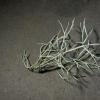
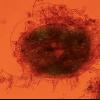
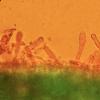
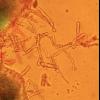
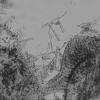
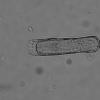
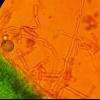
 IMG-2237-0001.JPG
IMG-2237-0001.JPG
